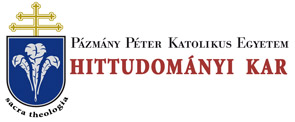Folia Theologica et Canonica, Supplementum (2016)
Hanns Engelhardt, Marriage and Divorce In Anglican Canon Law
MARRIAGE AND DIVORCE IN ANGLICAN CANON LAW 51 State. To define this term “established” is rather difficult2 and all the more so since the legal position of the Church of England has developed in the course of the centuries, and especially in the course of the 19lh and 20lh centuries. In any case, it follows from the “establishment” that in England the law of the Church of England and the law of the state cannot easily be distinguished. The law of the Church of England is “part of the law of the land”3; on the other hand, the state has to a considerable extent legislated, and is - as a matter of principle - still legally capable to legislate, for the Church. Indeed, Parliament legislated in purely ecclesiastical affairs well into the 20"’ century;4 so the fact alone that a regulation concerning marriage was made by Parliament does not show that the law of marriage has shifted from the realm of the church to that of the state; however, in the area of marriage and divorce church law and state law began to drift apart materially in the 18'h century when dissenters were exempted from certain regulations; by the Marriage Act 1836 a distinctive duality of these laws came into being as this statute created the right of each citizen, regardless of church membership, to marry elsewhere than in the parish church, even by registrar’s certificate, and according to any form the parties wished.5 3. Thirdly I should like to mention beforehand that what I will say will be confined to what may be called the law in force, those rules duly enacted and observed as distinct from what individual theologians or canon lawyers might think should be observed. In so far there are widely differing opinions with regard to many points of law so that I often say, hyperbolically, that for nearly everything I will maintain you may find Anglicans maintaining the opposite. But fortunately, this is not the subject of these considerations. II. Marriage The Book of Common Prayer (BCP) of 1662, still in statutory force in England as part of the Act of Uniformity 16626, directs the priest to say in the introductory speech to the marriage rite - in nearly the same words as the first BCP of 1549: Dearly beloved, we are gathered together here in the sight of God, and in the face of this congregation, to join together this Man and this Woman in holy Matrimony, which is an honourable estate, instituted of God in the time of 2 E.g., Avis, P., Church, State and Establishment, London 2001.18 seqq. 1 Hill, M., Ecclesiastical Law, London 1995. 1. 4 Cf. HOLDSWORTH, W. A History of English Law, XIII. London 1952. 418 seqq. 5 Doe, N., The Legal Framework of the Church of England. A Critical Study in a Comparative Context, Oxford 1996. 359. ‘ 13 & 14 Car. //, c. 4.
